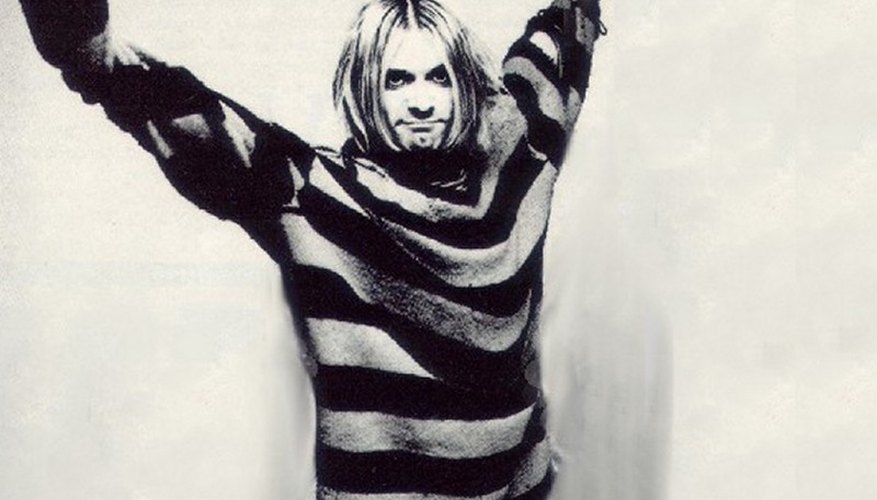1992 was the era of grunge, baggy jeans and overalls.
It was also a time of departure from the sharp fashion structures of the 1980s.
1992 was one of the years where eighties fashion gave way to 1990s casual. Generation X made definitive statements by rejecting mainstream designers and choosing to create their own looks. Science contributed to this era of casual charm with new knit fibres that helped craft a more flattering silhouette.
History
According to the BBC, 1992 was a time of simplification and laid-back fashion. Birkenstock sandals became popular. So did sagged jeans. This could be attributed to a more casual mindset in the United States. After the 1980s era of power suits, strong shoulders and harsh lines, the 1990s went back to basics.
Around that time, there was a pull towards "slacker chic", working out of the home and comfort dressing. No one designer ruled the roost.
- According to the BBC, 1992 was a time of simplification and laid-back fashion.
- Around that time, there was a pull towards "slacker chic", working out of the home and comfort dressing.
According to Fashion-Era.com, "dressing down in every aspect of life became an acceptable norm. Ordinary retail clothing sales, textile manufacturing industries and stores all declined from a less active more casual marketplace."
1992 saw the "supermodels" in full swing, with lush-bodied beauties hard at work on billboards and magazine covers.
The physical ideal was centred around the Big Six: Claudia Schiffer, Cindy Crawford, Kate Moss, Linda Evangelista, Naomi Campbell and Christy Turlington. The next year, Kate Moss would do her first shoot with Calvin Klein.
Time Frame
The 1992 aesthetic can be grouped with the post-1980s years. Therefore, there were still some residual traces of eighties style. Chunky, bold jewellery became softer, smaller and classic. Shiny lame gave way to fabrics that were lustrous and more tactile. The early 90s amalgam of styles was marked by other throwbacks, such as structured blazers, long jackets and pantsuits.
In this time, the Internet and personal technology was spreading like wildfire. As a result, looks started to include the latest in phones, along with Palm Pilots and other personal assistants. The early 90s were a time of melding ever-increasing amounts of diverse information with older, more institutionalised sources.
- The 1992 aesthetic can be grouped with the post-1980s years.
- As a result, looks started to include the latest in phones, along with Palm Pilots and other personal assistants.
Features
The early 90s were a time of new technology in fabric, with interesting textiles and luxury fabrics that made their way down to the masses. Tencel was introduced, and Lycra made a huge impression in the form of bright neon separates. Cashmere and velvet made a comeback, since they could be produced more affordably for less.
The biggest trend of 1992 was grunge. It was the time of Doc Marten boots and ripped jeans.
It was cool to reject the mainstream, and Generation X took to the streets in clothing that was proudly thrift or DIY.
- The early 90s were a time of new technology in fabric, with interesting textiles and luxury fabrics that made their way down to the masses.
- It was cool to reject the mainstream, and Generation X took to the streets in clothing that was proudly thrift or DIY.
Simultaneously, the hippie look came back into vogue. Both of these fashions had common attributes, such as long, flowing silhouettes and an agreement to eschew overt luxury.
Benefits
1992 was a great time in fashion because individual style and comfort became key. The grunge phenomenon worked hand in hand with the development of alternative music, which revolutionised the entertainment world. Because of an emphasis on more honest self-expression through clothing rather than conformity, fashion became more accessible to the common man and woman.
- 1992 was a great time in fashion because individual style and comfort became key.
- The grunge phenomenon worked hand in hand with the development of alternative music, which revolutionised the entertainment world.
"Comfort clothing" also brought people back to the roots of clothing itself. It became fun to create clothing from scratch, or to customise looks.
Magazines had DIY idea columns, and vintage accoutrements got a second chance at life. Old styles that had gone unappreciated for so long, such as petticoats and Victorian jewellery, were in the spotlight once more.
Effects
The large shifts in fashion complimented the changes happening in culture at the time.
While grunge happened in the suburbs, urban fashion developed into something new.
There was an opportunity for people to develop and market their own clothing styles for their own cultural groups, rather that depending on the mainstream design giants to do it for them. As a result, urban fashion is the billion dollar industry that it is today.
- The large shifts in fashion complimented the changes happening in culture at the time.
- As a result, urban fashion is the billion dollar industry that it is today.
Textiles would not be what they are today if it weren't for the modern fabrics created in 1992. These new fabrics added new possibilities for all types of clothes, from casual to evening wear.
According to Fashion-Era, "Lycra was mixed with many fibres to improve and enhance wearing and crease recovery qualities of fabrics. Trousers, jeans and skirt wools all benefited from approximately 2- 6% addition of an elastomeric such as Lycra or Spandex."
